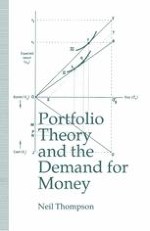1993 | OriginalPaper | Chapter
The Empirical Demand for Money Function
Author : Neil Thompson
Published in: Portfolio Theory and the Demand for Money
Publisher: Palgrave Macmillan UK
Included in: Professional Book Archive
Activate our intelligent search to find suitable subject content or patents.
Select sections of text to find matching patents with Artificial Intelligence. powered by
Select sections of text to find additional relevant content using AI-assisted search. powered by
The empirical relationship which has received most attention in the modelling of private sector financial behaviour is the demand for money function. Over the years, there has been a plethora of studies on the aggregate demand for money functions of both the UK and US, and it is arguably the most estimated relationship in the whole of empirical macroeconomics. The majority of these studies have not been primarily concerned with testing, at the aggregate level, the empirical validity of the alternative micro theories of money demand discussed in earlier chapters. This is partly because total money holdings are not readily separable into their different transactions, precautionary and risk-return elements, a degree of disaggregation which is required for the satisfactory testing of most of these theories. Also, variables such as the risk attached to bond holding, the level of brokerage costs and the variance of net receipts, which are crucial to the testing of particular theories, are by their very nature, difficult to measure in any satisfactory way for empirical purposes. These data limitations have meant that most empirical studies have been concerned with finding a stable aggregate time-series relationship, between money holdings and a few key determining variables, such as the rate of interest and the level of income or wealth.1
